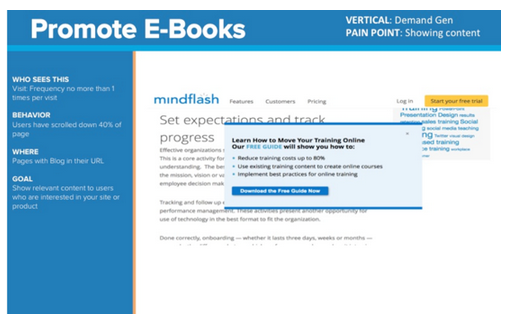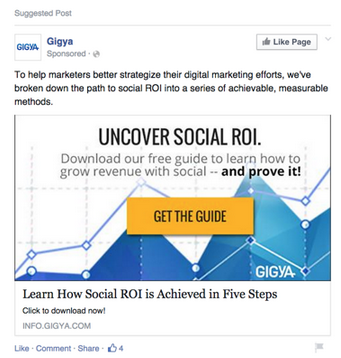
This post originally appeared on the Evergage blog.
B2B marketers know that online audiences are driven by two motivations: 1. a strong desire to learn and 2. a desire to generate results for their companies. That’s why business leaders are investing so heavily in content development as a key demand generation best practice — to bridge the gap between customer education and sales.
According to a report from the Content Marketing Institute, 93 percent of B2B marketers are investing in demand gen resources like infographics, blog posts, whitepapers and videos. What’s happening, as a result of this rapid proliferation of content, however, is an overload of information, with B2B audiences feeling overwhelmed with more resources than they can possibly consume.
The smartest marketers are skeptical about their efforts — suspecting that their content programs are falling short in generating real results. According to the same Content Marketing Institute report, only 42 percent of B2B marketers believe that their content programs are effective.
That’s a problem — but it’s one that marketers can resolve by following five simple steps:
1. Focus on the right goals
The challenge that many marketers face is that they’re targeting the wrong stages of the conversion funnel. Instead of using ebooks and whitepapers to ramp up their demand generation strategies, they’re focusing heavily on early-funnel opportunities to ‘break through the noise.’
The most successful marketers aren’t fighting noise or looking for ways to break through — instead, they’re outsmarting it. Recognize that personalization will will help you craft a more impactful content program.
2. Prioritize relevance
Content campaigns are exponentially more effective when tailored to specific user interests. Instead of bombarding audiences with a ‘one-size-fits-all’ resource that may — or may not — be relevant their specific interests, you can fine tune your messaging to specific user behaviors.
For instance, you may want to target users based on specific pieces of content that they’ve read. You may also reach audiences that have specifically requested more information in a particular area of your business.
The more focused you are, the better-positioned you will be to develop a 1:1 relationship with your prospects. Each piece of content will, as a result, generate lower viewership numbers — but you’ll likely see higher conversion rates.
3. Be smart about targeting
Audiences are bombarded with information — and often, marketers will attempt to strengthen connections with their prospects by being more aggressive. What ends up happening; however, is the opposite effect. Users start to feel spammed by pop-up windows and sales pitches that are disruptive, rather than helpful, to their browsing experiences.
It may sound counterintuitive, but B2B brands should limit the frequency of their messages — including ebook offer downloads — to once per user visit. It’s also important to vary your marketing messaging so that audiences don’t see the same information repeated.
Remember that online audiences are highly research driven. They’re learning as much as they possibly can before reaching out to your sales reps — a process that takes time. These audiences are well-aware of your marketing tactics, so don’t try to pressure them into a sale. Take a step back, and give them the space to browse your website.
4. Track segment performance
Smart marketers know that some leads are more valuable than others. But still, they’re driven by team-wide goals to ramp up immediate conversions — a view that stifles marketing performance over the long-term.
Marketers can more effectively gauge the success of their ebook and whitepaper campaigns by looking at the full demand generation picture. Create goal segments to calculate the number of users who have signed up for a free trial for a product — or reached out to your sales team for more information, for instance.
Look beyond leads to start quantifying demand.
5. Reach audiences across platforms & devices
We live in a cross-device, cross-channel world — and this trend is only going to become more prevalent. In addition to connecting with audiences on your own website, you need to reach them on other platforms as well.
Facebook Custom Audiences and Google AdWords; for instance, allow you to target your exact users based on specific actions that they have taken on your website.
With the right technologies, you can stay connected to your audiences, no matter where they are — to always ensure that your value proposition is top of mind.
Final thoughts
Reach the right audiences with the right messages at the right time. This principle is the heart of the most successful demand generation strategies. If you’re not sure where to get started, just take a look at your existing audience and growth levers. Focus on opportunities to add value — the conversions will follow.
Get the TNW newsletter
Get the most important tech news in your inbox each week.


